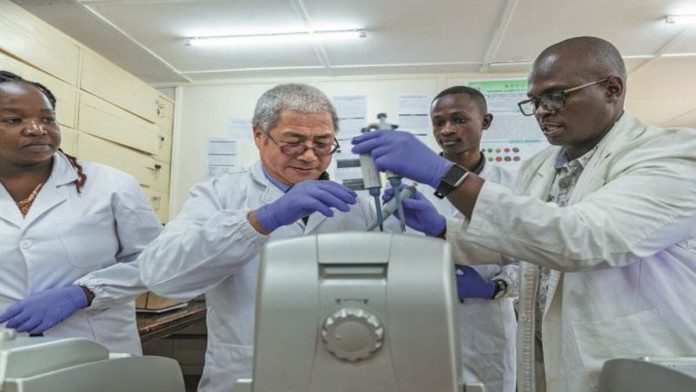News in Brief:
– A Kenya-China joint agricultural lab has developed disease-resistant crop varieties with higher yields.
– These improved seeds, like the chelalang bean and water-efficient rice, are being introduced to Kenyan farmers to enhance food security.
An agricultural lab established in Kenya with Chinese collaboration is reaping significant rewards for the nation’s farmers. Over the past five years, the Kenya-China Joint Laboratory for Crop Molecular Biology at Egerton University has successfully developed more than two dozen superior crop varieties using advanced molecular breeding techniques, a report says.
These new breeds hold the potential to improve food security in Kenya. Eighteen of the 25 developed varieties have already been commercially launched for farmers to grow disease-resistant crops with the potential for higher yields compared to traditional varieties.
The process of developing a new variety usually begins with research and development at the laboratory. Once promising seeds are identified, they are transferred to the Egerton University Agro-Science Park for seed bulking and commercialisation.
Among the early success stories are five improved bean varieties, with three already commercially available. One popular variety, named chelalang, boasts yields of up to 25 bags (2.25 metric tonnes) per hectare.

Another variety, called tatton, is prized for its high pod count, self-stripping leaves (facilitating easier harvest), and adaptability to various altitudes, making it popular with canneries.
However, the collaboration extends beyond beans. Recognising Kenya’s high dependence on rice imports (nearly 85%), the project is promoting upland rice varieties requiring less water.
Through partnerships with organisations like Kilimo Trust, researchers are training farmers in sustainable rice production techniques. These efforts have already shown promise, with rice yields increasing from 2 tonnes to 3.5 tonnes per hectare within two years.
Experts believe that with proper management, these new rice varieties have the potential to produce even higher yields, ranging from 7 to 11 tonnes per hectare.
The success of this collaboration in Kenya offers a compelling vision for the future. As Joseph Orende, program assistant at Kilimo Trust, suggests, replicating this model across Africa, focusing on various food chains, holds immense potential to ensure food security across the continent.



